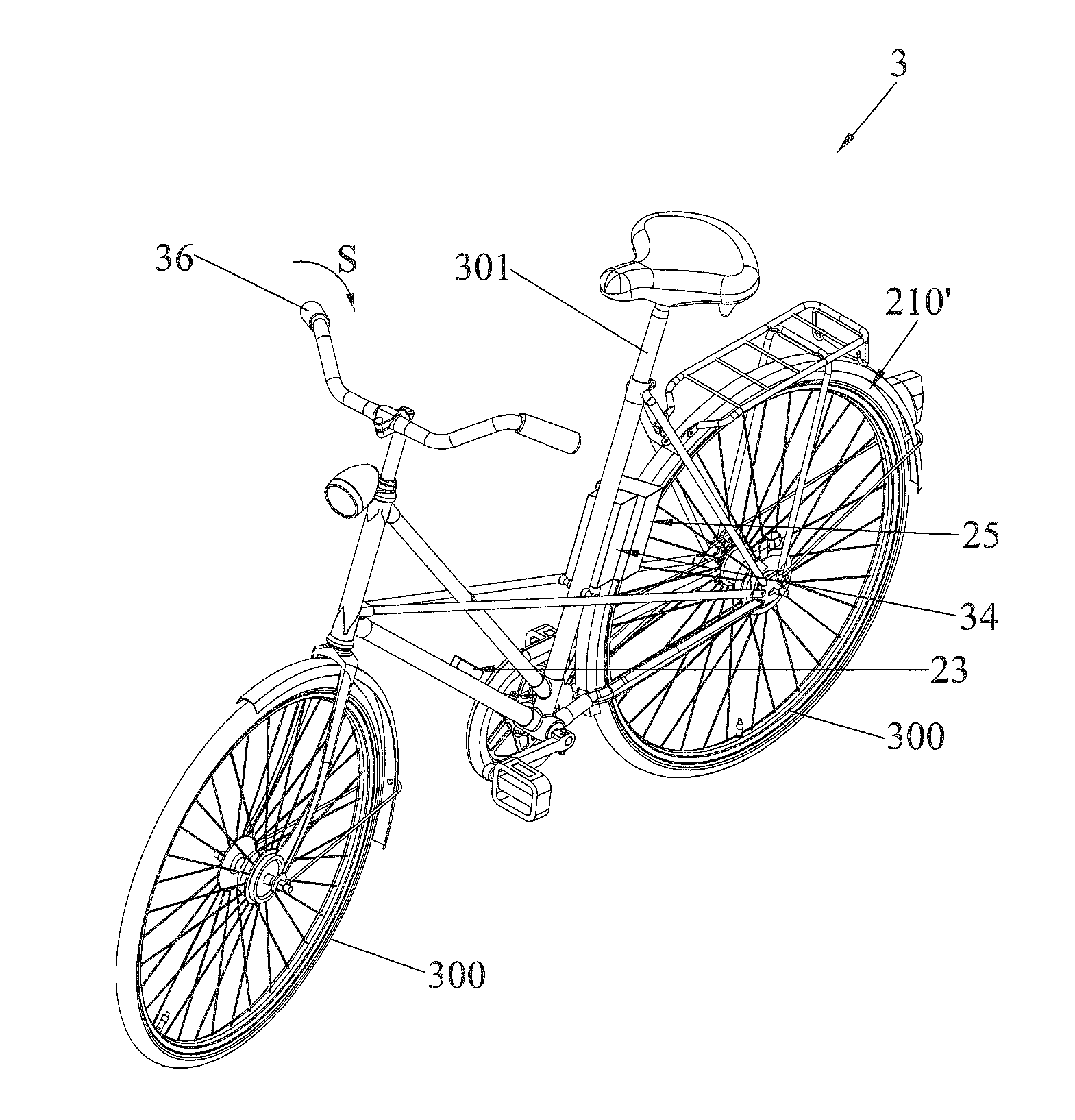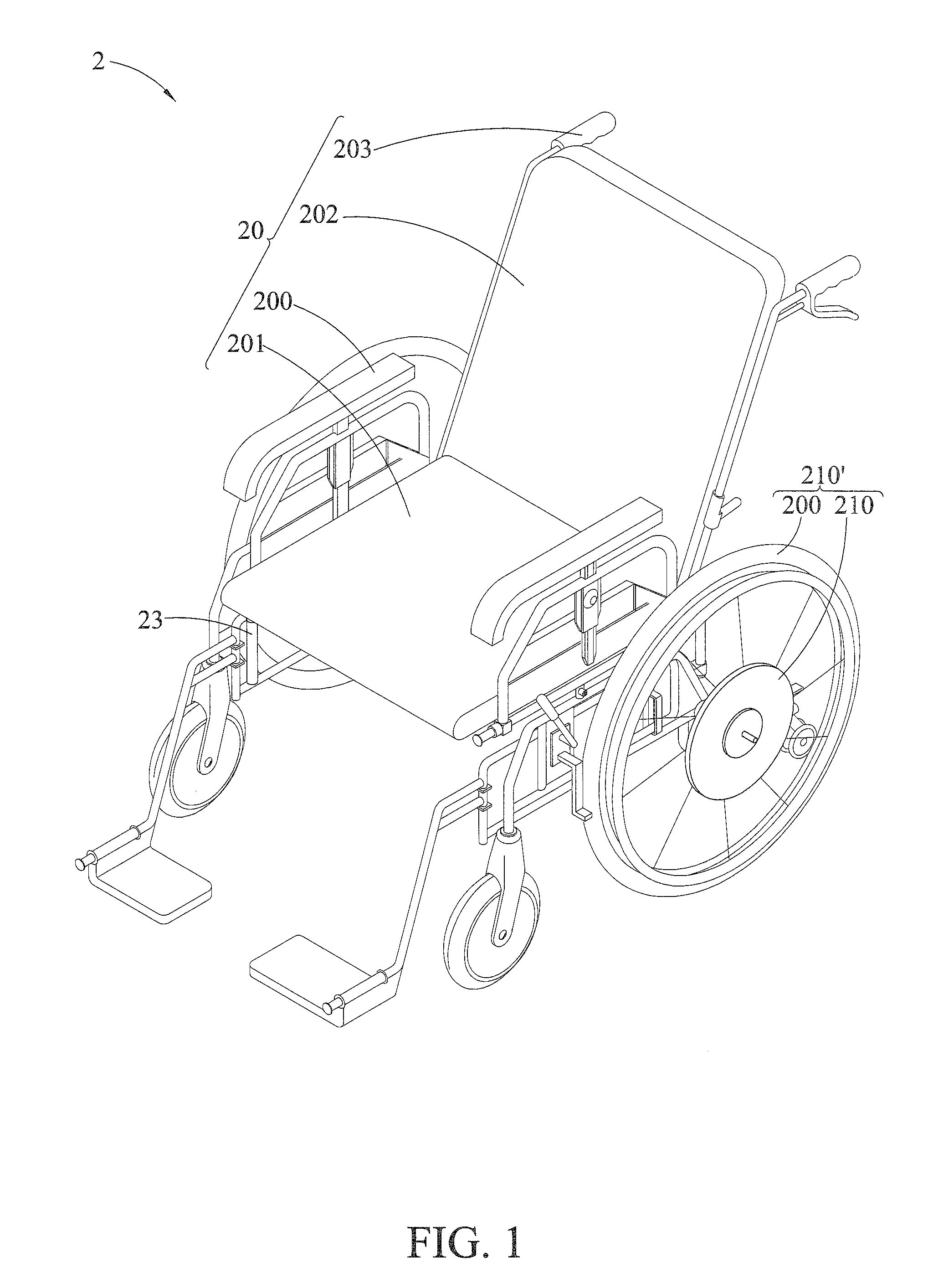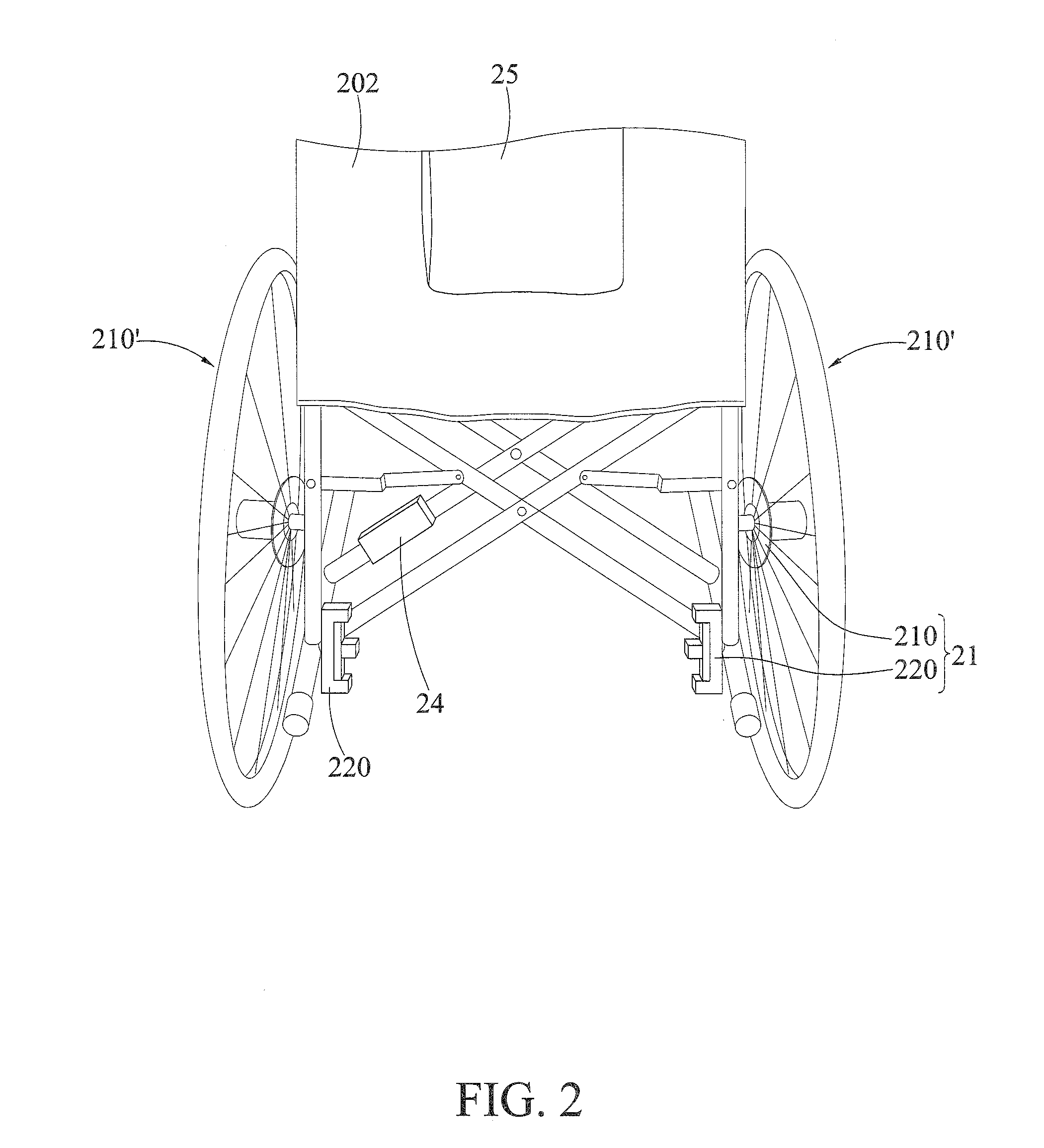Mobility vehicle and power-assisting system
a technology of mobility vehicle and power assist system, which is applied in the direction of propulsion by batteries/cells, process and machine control, instruments, etc., can solve the problems of wasting energy and physical strength, muscle fatigue, and mechanical kinetic energy being converted into unrecyclable heat energy, etc., to save human labor, easy to be attached and disposed, and widely available and inexpensive
- Summary
- Abstract
- Description
- Claims
- Application Information
AI Technical Summary
Benefits of technology
Problems solved by technology
Method used
Image
Examples
Embodiment Construction
[0033]The following specific embodiments are provided to illustrate the disclosure of the present invention, the advantages and effects can be apparently understood by those skilled in the art after reading the disclosure of this specification.
[0034]It should be understood that, in the specification to the accompanying drawings, the depicted structures, proportions, sizes, etc., are disclosed only to match the content of the specification, and to facilitate the understanding for those skilled in the art, but not to limit the present invention in specific conditions. The depicted structures, proportions, sizes, etc. do not contain specific technical meanings. Any modification of the structure, change of the ratio relation, or adjustment of the size should be involved in the scope of disclosures in this specification without influencing the producible efficacy and the achievable objective of this specification. Also, in this specification, the referred terms such as “upper”, “left”, “...
PUM
 Login to View More
Login to View More Abstract
Description
Claims
Application Information
 Login to View More
Login to View More - R&D
- Intellectual Property
- Life Sciences
- Materials
- Tech Scout
- Unparalleled Data Quality
- Higher Quality Content
- 60% Fewer Hallucinations
Browse by: Latest US Patents, China's latest patents, Technical Efficacy Thesaurus, Application Domain, Technology Topic, Popular Technical Reports.
© 2025 PatSnap. All rights reserved.Legal|Privacy policy|Modern Slavery Act Transparency Statement|Sitemap|About US| Contact US: help@patsnap.com



